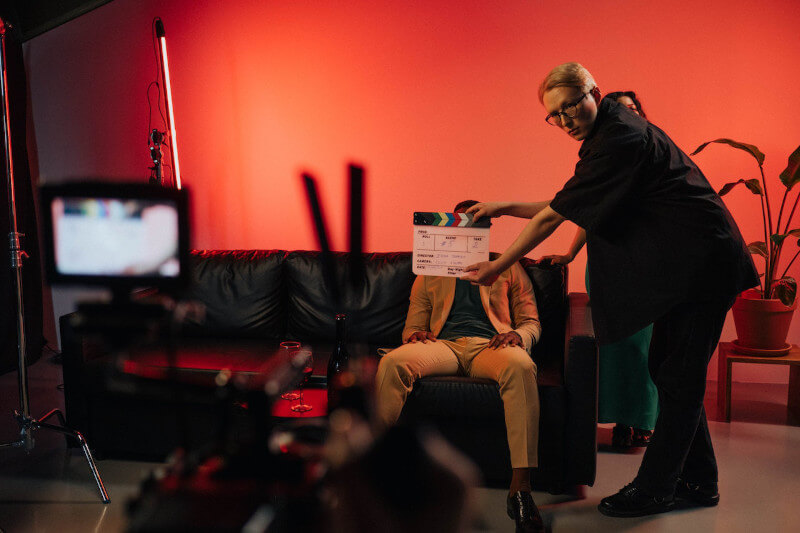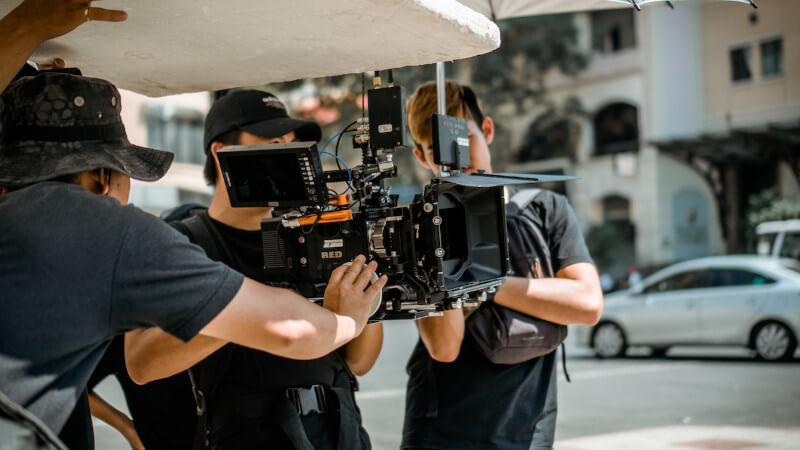From Rookie to Pro: How to Navigate the World of Film Set Work
You could have a lot of fun working on a film set if you’re into making movies. To realize the vision of the screenwriter, director, and filmmaker, most sets have a large number of people working together to accomplish various goals. There are a wide variety of approaches you can take to finding and landing a role on a film set, which is helpful given the industry’s high profile and competitive nature. What is a film set, who works on a film set, and how to get a job on a film set are all discussed in this article.
What’s the Point of Being an Extra in a Movie?
The set of a film is where the actors and crew members work together to create the final product. Working on a film set appeals to many people because it gives them a chance to see how movies are made from beginning to end. A film’s budget and the nature of the end product dictate the scale of the set. It’s common for a feature film to have a sizable budget and a large crew, while an independent film’s production budget and staff are typically much smaller.
Possibilities for Employment on a Film Set
Work opportunities on film sets can range widely depending on factors like the size and budget of the production. The following are some of the most common jobs on a film set:
Department of Directors

A director and any necessary assistant directors make up the bulk of the direction staff. In the filmmaking process, the director often makes decisive calls. In most cases, they are in charge of taking the script from the writer and making it into the film they envisioned. Directors typically choose where scenes will be shot, what will be used in them, what colors will be used, and what instructions the crew should follow before filming begins. In most cases, the assistant directors serve as the primary liaisons between the director and the cast and crew. They ensure that everything goes smoothly and get everyone in the cast and crew ready for their next scenes.
Producers
The financial and operational aspects of a film are typically handled by the producers and their teams. A producer’s job is to work closely with the director to ensure that the project stays on track and within budget. The majority of the time, it is their responsibility to find the film’s budget and recruit the cast and crew. Production managers watch over test screenings and give final approval of the film before it is released.
Photographers on the Set
The cameras and monitors are operated by a staff of people who make up the “camera crew.” Throughout the film, they will typically shoot a variety of scenes to ensure that the footage they receive is in line with the director’s intentions. The director of photography oversees the camera crew and instructs them on the best ways to film each scene, and the camera operators are two common crew members. Skilled in videography, these camera operators know how to position the camera and move around set pieces to get the best shot possible.
Office of A/V Technology
Employees in the lighting and sound department use lighting and microphones to record the film’s audio and visual elements. The boom operators, sound editors, and product sound mixers make up the sound team. All sounds, such as dialogue, music, and ambient noise, are typically captured. This crew is in charge of making sure the movie sounds good and that the score and dialogue mesh well.
A gaffer and other electricians make up the lighting department, which is responsible for developing the film’s lighting schemes and ensuring that they are carried out successfully during production. In most cases, they intend to use their familiarity with color theory to ensure seamless integration with the characters’ wardrobes, props, and environments. The majority of lighting crew members also work to ensure that the lighting effectively conveys the director’s intended emotional story through the use of color theory and other techniques of emotional storytelling.
Environment and Set Dressing

Everything that the actors interact with or use on set is taken care of by the “props” department. The props department is made up of many people, including the props master, props assistant, and prop maker. The props master is responsible for tracking down and purchasing all of the necessary items for the film while staying within the allotted budget. Prop makers often make custom props for clients if they are unable to find what the client needs in stores.
It is common practice for the locations department to collaborate with the props department and the directors to locate appropriate locations for filming. It is the location manager’s job to oversee the location scouting process and choose which locations to pitch to the director after the scout has visited several potential sites. When the location scouts have found a spot that the director is happy with, they coordinate with the relevant authorities to make sure they can film there on the scheduled day. A film set is a competitive workplace because many qualified people seek employment there. You can still improve your chances of landing a role in a film by trying out these techniques.
To Find a Job on a Movie Set and Get Things Done, Just Follow These Steps

Put Together a Resume and Cover Letter
The majority of crew positions require applicants to submit a resume and cover letter detailing their filmmaking experience and, ideally, linking to relevant examples of their work. Look for independent or low-budget films or videos online if you don’t have much experience with film sets. You can use the skills you develop here in your pursuit of a full-time position on a larger film set. If you want to have more experience to list on your resume or cover letter, you might think about making your videos or films.
Make Use of Your Existing Network in the Field
Getting hired for films helps to have connections in the industry. If you have experience working on other film or video projects, it would be beneficial to network with other crew members. Contact these workers to see if they have any information about open positions on sets. Provide these people with a copy of your resume and cover letter so they can share it with others who may be interested in your qualifications. Getting a job on a set is easier if you have connections, as many employers put stock in the opinions of current or former employees.
Take Advantage of the Knowledge of the Crew Members Who Are Currently on Duty
Once you’ve earned your place on set, take advantage of downtime or breaks to learn from more experienced crew members about specific filming techniques or methods. They could give you pointers on how to hone your skills for future film roles. Keep in touch with the crew and have your resume and cover letter handy at all times in case they’d like to consider you for other projects after this one wraps up.
Always Keep a Professional Demeanor and Be Polite to Others
Maintain a steady level of professionalism while working. Be sure to take the advice of the more seasoned actors on set. If a member of the film crew has proven themselves to be reliable and gets along well with others on set, it’s not uncommon for the filmmaker who hired them to bring them back for another project. After you’ve proven yourself to be a dedicated worker who can get the job done right, you might start getting regular offers to continue working in the film industry.



